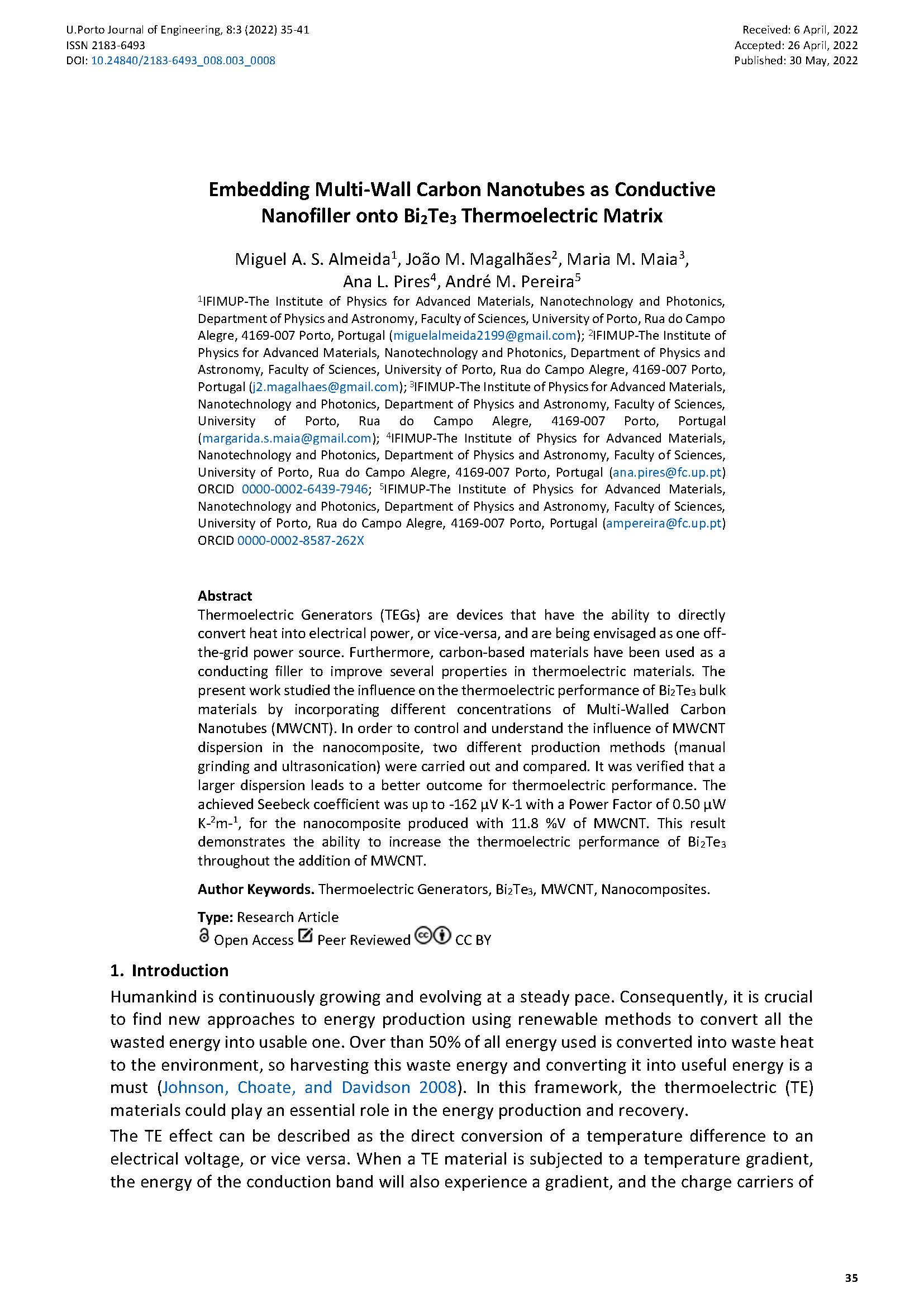Embedding Multi-Wall Carbon Nanotubes as Conductive Nanofiller onto Bi2Te3 Thermoelectric Matrix
Main Article Content
Abstract
Thermoelectric Generators (TEGs) are devices that have the ability to directly convert heat into electrical power, or vice-versa, and are being envisaged as one off-the-grid power source. Furthermore, carbon-based materials have been used as a conducting filler to improve several properties in thermoelectric materials. The present work studied the influence on the thermoelectric performance of Bi2Te3 bulk materials by incorporating different concentrations of Multi-Walled Carbon Nanotubes (MWCNT). In order to control and understand the influence of MWCNT dispersion in the nanocomposite, two different production methods (manual grinding and ultrasonication) were carried out and compared. It was verified that a larger dispersion leads to a better outcome for thermoelectric performance. The achieved Seebeck coefficient was up to -162 µV K-1 with a Power Factor of 0.50 µW K-2m-1, for the nanocomposite produced with 11.8 %V of MWCNT. This result demonstrates the ability to increase the thermoelectric performance of Bi2Te3 throughout the addition of MWCNT.
Downloads
Article Details

This work is licensed under a Creative Commons Attribution 4.0 International License.
Authors who publish with this journal agree to the following terms:
- Authors retain copyright and grant the journal right of first publication with the work simultaneously licensed under a Creative Commons Attribution License that allows others to share the work with an acknowledgement of the work's authorship and initial publication in this journal.
- Authors grant the journal the rights to provide the article in all forms and media so the article can be used on the latest technology even after publication and ensure its long-term preservation.
- Authors are able to enter into separate, additional contractual arrangements for the non-exclusive distribution of the journal's published version of the work (e.g., post it to an institutional repository or publish it in a book), with an acknowledgement of its initial publication in this journal.
- Authors are permitted and encouraged to post their work online (e.g., in institutional repositories or on their website) prior to and during the submission process, as it can lead to productive exchanges, as well as earlier and greater citation of published work (See The Effect of Open Access).

